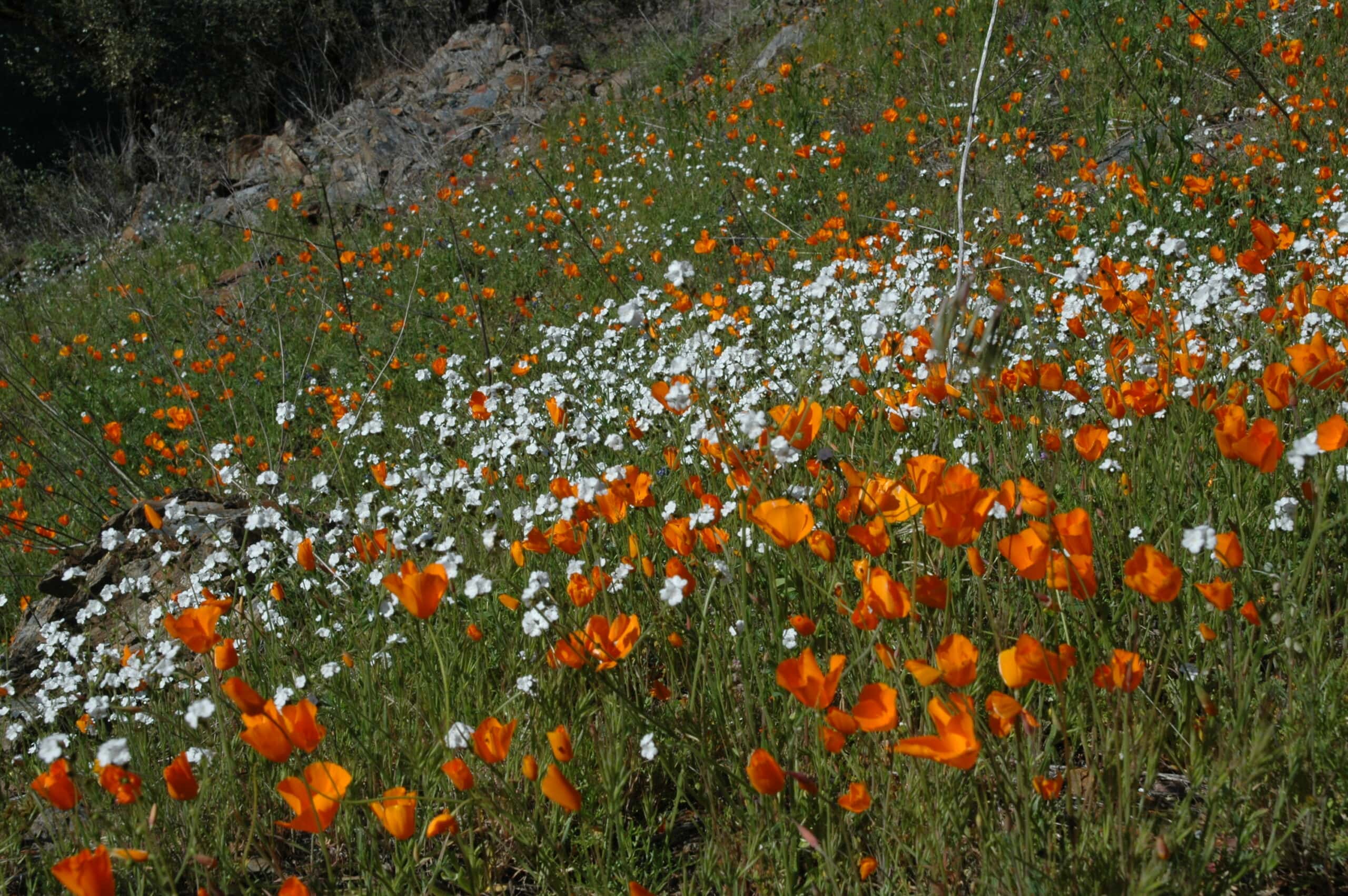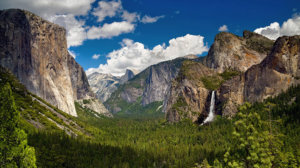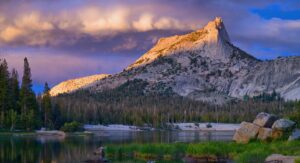Spring in Yosemite Mariposa County means two things will happen without fail. The waterfalls will rush and the Yosemite wildflowers will pop. While Yosemite and waterfalls are synonymous and need very little introduction, there’s probably a lot more to the Yosemite area’s wildflowers than you realize.
In Mariposa County, wildflowers bloom with such abundance that it could be easy to think that you’ve stepped out of your vehicle into a Bob Ross painting. And you’re not far off, but those wildflowers that add big swatches of color to the region’s meadows, foothills and canyons aren’t Bob Ross’s trademark “happy little accidents”, they’re examples of thousands of years of resilience blooming new, year in and year out, in the Sierra Nevada area.
Why is Wildflower Viewing so Special in Yosemite Mariposa County?
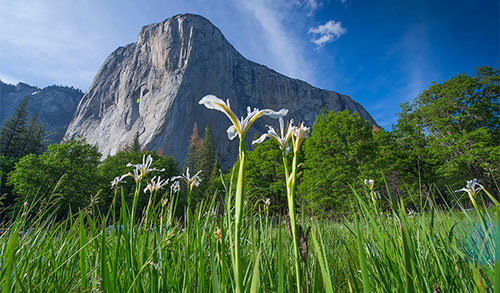
It would be great if there was just one answer to give to that question, but there is so much more to why this is one of the best places to see wildflowers in California. First, you need to understand that Mariposa County is a HUGE area spreading across thousands of feet of elevation changes. Ranging from low elevation pastures to alpine meadows, the county makes wildflower viewing incredibly easy since spring is almost never ending as it marches up the hill. In March, the low elevation Gold Country’s rolling green pastures are doted in oranges, purples and whites while the high country is still covered in a fresh blanket of snow. By April and May, spring has made its way to Yosemite Valley and brought with it fresh flowers to the Valley’s meadows like lupines, tufted poppies and showy milkweed. Couldn’t make it to Yosemite in spring? Not to worry, the high-country meadows along Tioga Pass boast new wildflowers in even as late in the year as July and August, since winter’s snowpack has just melted off.
What Yosemite wildflowers can you see in Mariposa County?
Well, the answer is a long one. The multitude of elevations and climate in Mariposa County bring with them multitudes of wildflowers. But here are a few of the most common ones you may see.
California Poppy
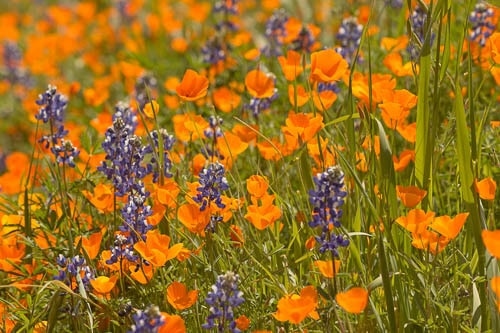
One of the most common sights, and California’s most famous, is the state flower, the California Poppy. These brilliant specimens bloom all over the county and can be seen first in low elevation areas like Hornitos, Cathey’s Valley and Mariposa. The unmistakable little orange cups of the California Poppy bloom atop thin green stems and across the hills and canyons of the county so abundantly that you may have to ask, “Is that a green hill with orange flowers, or an orange hill with green flowers.” They’re everywhere. There is perhaps no better place to spot a field of California Poppy than in the Merced River Canyon along Highway 140 where the glorious orange flower coats the canyon’s walls making a beautiful drive even more breathtaking. Note: you should never pick wildflowers, but picking a California Poppy is illegal. Leave the state’s flower in the field so that more people can enjoy it later.
Lupine
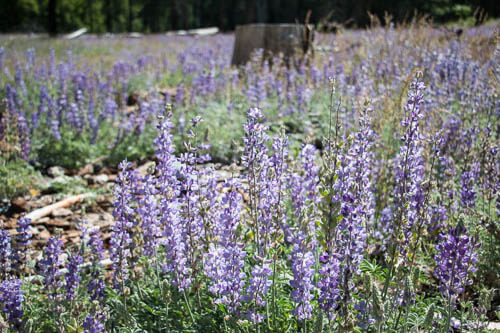
Another common sight is Lupine. Most commonly seen in purple, white and blue variations of Lupine can be spotted as well and again in a multitude of elevations. This is among the most common flower found in Yosemite National Park. Lupine grow vertical and bloom a dozen or so petals up and down the stem of the flower. If you’ve walked through Yosemite’s Cook’s Meadow or Wawona Meadow during the spring, you’ve probably spotted some lupine, as well as a few others like cow’s parsnip or shooting stars.
Snow Plant
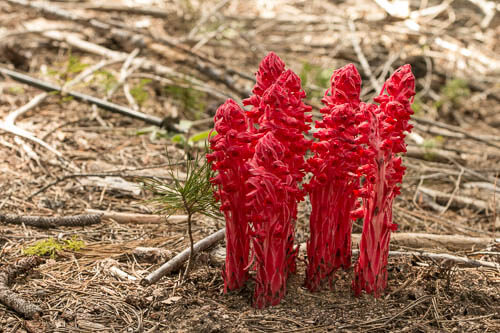
One of the rarer flowers in Yosemite, this one can be easy to find if you just know where to look. Snow plant is easy to spot as its bright red petals grow up out of areas just as the high country’s snow is melting. Like a speck of red on a white canvas, the flower rises up between six inches and a foot off of the forest floor. Fun fact, snow plant does not survive using photosynthesis like most flowers. This adaptive little plant thrives off of fungus growing in the wet soil fresh off of melted snow, so it doesn’t require any full sun. Keep an eye out for these along Glacier Point road in June. As an extra bonus, see if you can spot a hummingbird fluttering around the plant’s bell-shaped flowers.
What are the best ways to see Yosemite wildflowers?
Like most things in Yosemite Mariposa County, wildflowers are best experienced on foot, however there are some relaxed drives that will let you soak in wildflowers from the car windows. In the early spring taking Hornitos Road from Cathey’s Valley to Hornitos provides great views of wildflowers dotted through green pastures in the Gold Country. The aforementioned drive along Highway 140 in the Merced River Canyon between the towns of Briceburg and El Portal is another great stretch of highway. But beyond that, we really recommend stopping the car and smelling the roses – or poppies for that matter.
Yosemite Spring Flowers in Hite Cove
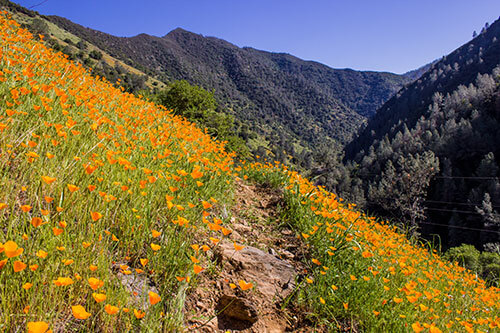
For a hike through fields of poppies, there is perhaps no trail better than this one. Start in the Merced River Canyon along Highway 140 at Cedar Lodge, parking is just across the highway from the trailhead. This trail climbs up slightly to start, but within the first few miles you’ll find that you’re in a gorgeous meadow full of flowers. The trail extends for a 9-mile round trip jaunt to an abandoned mining settlement, (the original Hite Cove) but if it’s just wildflowers you’re interested in you’ll find hundreds or even thousands just within the first few miles of the walk. Note: please stay on the trail to give the plants growing here a chance.
Yosemite Spring Flowers on the Valley Loop Trail
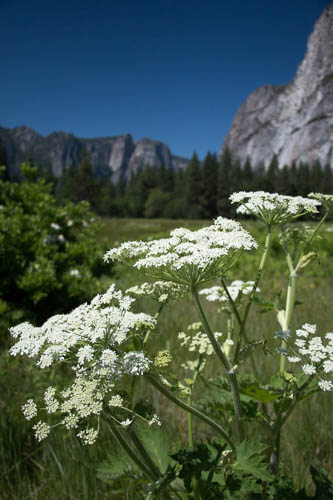
Looking for a great hike to see wildflowers in Yosemite National Park? Look no further than one of the most user-friendly trails in Yosemite, the Valley Loop Trail. This trail is great because you can make it as short or long as you like. The full loop trail is 13 miles, but you can easily make it half-loop for a 6.5-mile walk. It can also be as short or as long as you like by walking until you’ve had your fill and then simply turning back. The easiest place to start the trail is at the trail head to Upper Yosemite Falls. Park at Camp Four or near Yosemite Valley Lodge to embark on this flat hike. After a little more than a mile from the trail there you’ll find yourself on the edge of Cook’s Meadow overlooking a field of green with flowers dotted all through it. Keep walking a few more miles and you’ll find yourself at the base of El Capitan as it looks down on another meadow full of bright wildflowers.
Yosemite Plants in McGurk Meadow
Visiting in May or June and looking for wildflowers along the recently opened Glacier Point Road? Be sure to make a stop at McGurk Meadow. This meadow is easily missed along the high-country road, but it provides a short and very easy hike at altitude. Here you’ll find lupine, Indian paintbrush, monkeyflowers, and if you’re lucky, some snow plant growing out of some of the last traces of winter in the meadow. One thing you’re less likely to find is people. Many people drive straight past McGurk Meadow on their way to Glacier Point, Taft Point and Sentinel Dome. Take our advice and slow down and enjoy this quiet meadow. Who knows, you may even share it with a friendly bear or hungry deer, but if you do, give those animals their space.
Yosemite Wildflowers in Tuolumne Meadows
The last vestiges of spring can be found high up in the Tuolumne Meadows area along Tioga Pass even as late as August. Here wildflowers have a brief chance to sprout and flourish – Tioga Pass is usually only free of snow for five or six months out of the year. Tuolumne Meadows also offers an amazing break from the heat and people that summer brings with it to the Valley. While the carpets of wildflowers are more common at lower elevations, up high you’ll find a huge variety of flowers of many colors, shapes, and sizes. These delicate blossoms grace the evergreen forests and the surrounding high country mountain peaks in even some of the most rugged locations.
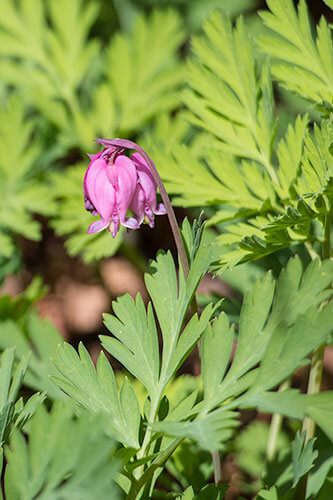
And keep your eyes open for these bleeding heart flowers. They are some of the first blossoms to appear in Yosemite Valley each year. Photo: Theresa Ho
Tips for Every Flowerchild
Viewing wildflowers is an amazing experience in the spring and summer in Yosemite Mariposa County and one that everyone should partake in. Be sure to follow our tips to make your experience – and everyone else’s – as good as possible.
- Don’t pick the flowers: They are in fact beautiful, but they’ll look just as beautiful later in the photos that you took. Leave the flowers there for the next person to enjoy.
- Park in designated areas: Seems obvious, but sometimes we get so taken back by beauty that we forget to park the car. A few years ago, the bloom of poppies in the Merced River Canyon was so great that it brought people from all over California to see them. Unfortunately, some of those people stopped their vehicles right on the highway to take photos. Take it slow. Drive safe. And only park in designated areas or in turnouts to keep your fellow motorists safe.
- Stay on the trail: Hiking through a field of flowers? Enjoy! But be sure to stay on the path. Don’t sacrifice the plant life for an Instagram photo.
- Follow leave no trace principles. California Poppies are gorgeous and best viewed without a candy bar wrapper on the ground next to them.

